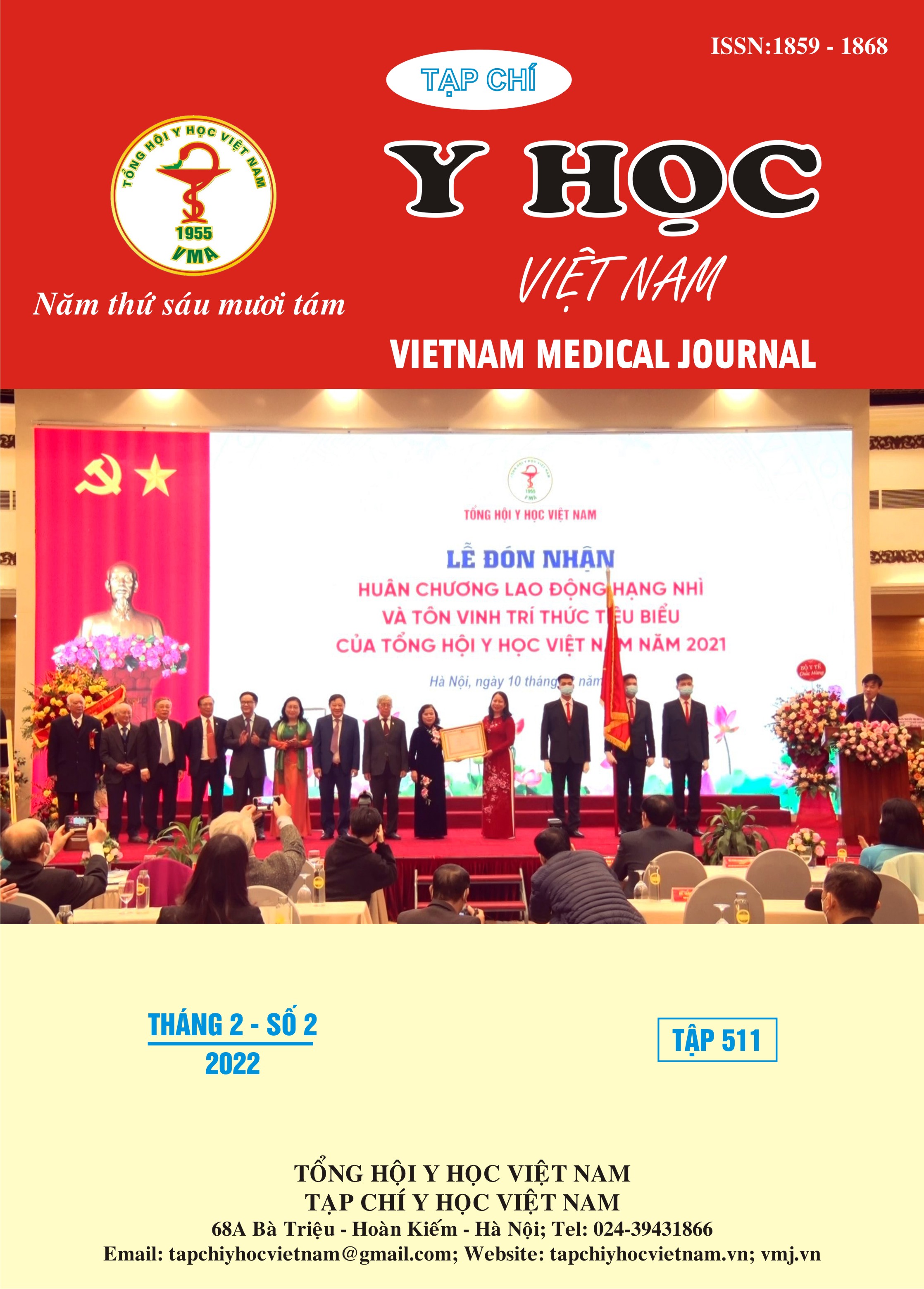CHARACTERISTICS OF HEPATITIS B VIRUS INFECTIONS IN NEWBORNS WHOM MOTHERS ARE POSITIVE FOR HBsAg AT 103 MILITARY HOSPITAL
Main Article Content
Abstract
Objectives: evaluate the status of hepatitis B virus infection in newborns of mothers with HBsAg (+) and the relationship between the appearance of HBV markers in cord blood with the presence of these markers in maternal blood. Subjects and methods: A cross‐sectional study. 120 newborns of mothers with HBsAg (+) were at the Obstetrics Department, 103 Military Hospital, from August 2021 to December 2021. Results: Among 120 newborns with HsAg (+), the percentage of HBV markers in cord blood of the children was: the rate of HBsAg (+) 60.8%, HBeAg (+) 13.3% and HBV DNA ( +) was 16.7%. In maternal blood, the rate of HBeAg (+) was 30.8%, HBV DNA ≥5 log 10 copies/mL was 25.0%, mean ALT and AST levels were 25.7 ± 11.3 and 29.3 ± 12.7 U/L respectively. The rate of HBsAg (+) in the group of mothers with HBeAg (+) was 91.9%, higher than the group of HBeAg (-) was 47.0%, the difference was statistically significant, p<0.01. In the group of mothers with HBV DNA levels ≥5 log 10 copies/mL, 80.0% of children had HBsAg (+), 54.4% higher than the group with HBV DNA <5 log 10 copies/mL. The difference was statistically significant, p<0.01. Conclusions: the rate of HBsAg (+) in cord blood of the newborns was 60.8%, the rate of HBeAg (+) was 13.3% and the rate of HBV DNA (+) was 16.7%. In maternal blood, HBeAg (+) and HBV DNA levels ≥ 5 log 10 copies/mL are factors that increase the risk of mother-to-child transmission of HBV.
Article Details
Keywords
hepatitis B, pregnant, newborn
References
2. KT Yip, SM Chan,TL Que (2006), "Immuno-prophylaxis of babies borne to hepatitis B carrier mothers". Hong Kong Med J, 12(5), pp. 368-74.
3. Yi-Yang Zhu, Ying-Zi Mao, Wei-Ling Wu. et al. (2010), "Does hepatitis B virus prenatal transmission result in postnatal immunoprophylaxis failure?". Clinical vaccine immunology, 17(12), pp. 1836-1841.
4. Tianyan Chen, Jing Wang, Yuling Feng. et al. (2013), "Dynamic changes of HBV markers and HBV DNA load in infants born to HBsAg (+) mothers: can positivity of HBsAg or HBV DNA at birth be an indicator for HBV infection of infants?". BMC infectious diseases, 13(1), pp. 1-8.
5. Lê Đình Vĩnh Phúc,Huỳnh Hồng Quang (2016), "Nghiên cứu tỉ lệ và đặc điểm của nhiễm virus viêm gan B ở phụ nữ độ tuổi sinh đẻ từ 20 đến 35 tại trung tâm y khoa Medic thành phố Hồ Chí Minh năm 2015". Tạp chí Y học dự phòng, 8(181), pp. 108-117.
6. Phí Đức Long (2014). Đánh giá đáp ứng tạo kháng thể đối với vắcxin phòng viêm gan B ở trẻ có mẹ mang HBsAg. Luận án Tiến sỹ Y học, Đại học Y Hà Nội.
7. Kai‐Chi Chang, Mei‐Hwei Chang, Chien‐Nan Lee. et al. (2019), "Decreased neonatal hepatitis B virus (HBV) viremia by maternal tenofovir treatment predicts reduced chronic HBV infection in children born to highly viremic mothers". Alimentary pharmacology therapeutics, 50(3), pp. 306-316.
8. Chu Thị Thu Hà,Đinh Phương Hòa (2008), "Hiệu quả của biện pháp phối hợp can thiệp tiêm phòng Globulin miễn dịch và vắcxin viêm gan B cho trẻ trong vòng 24 giờ đầu sau khi sinh tại Hà Nội". Tạp chí Y học dự phòng, 4(96), pp. 24-27.
9. IS Elefsiniotis, M Papadakis, G Vlahos. et al. (2009), "Clinical significance of hepatitis B surface antigen in cord blood of hepatitis B e-antigen-negative chronic hepatitis B virus-infected mothers". Intervirology, 52(3), pp. 132-134.


